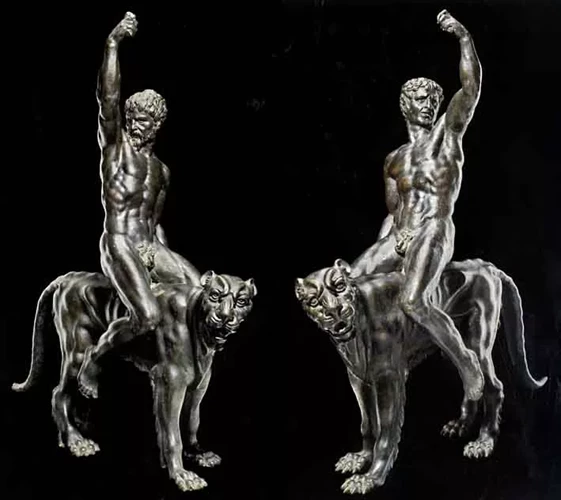
They will present scientific analysis taken from samples of the inner cores and XRF-readings at a symposium at Downing College, Cambridge, on July 6. It could point to a particular centre or Renaissance workshop. The event will lay out in detail the case for the attribution and will aim to reach a consensus about the maker.
The 2ft 11in (91cm) bronzes have been at the centre of extensive scientific and art-historical research since last autumn when Paul Joannides, Emeritus Professor of Art History at the University of Cambridge, connected them to a drawing by one of Michelangelo's apprentices showing a composition similar to the bronzes.
Preliminary scientific analysis bolstered the suggestion, dating the works to c.1500-10, the decade in which Michelangelo completed the marble David and embarked on the Sistine Chapel ceiling.
If the attribution is correct, they are the only surviving bronzes by the Renaissance master.
Rothschild Provenance
It would also settle one of the biggest and most complex attribution debates in art history. The bronzes were first noted in the collection of Adolphe de Rothschild in 1878, when they were attributed to Michelangelo, but the claim was immediately contested. Attribution to a number of other artists followed, including Jacopo Sansovino and Tiziano Aspetti, none of which stuck.
The bronzes remained in the Rothschild collection until 1957 when they were sold to a French private collector, before later turning up at Sotheby's London in July 2002. Estimated at £1m-1.5m, Sotheby's catalogued them as "Florentine, mid-16th century" and loosely associated them with the Florentine sculptor Benvenuto Cellini.
ATG reported at the time that they attracted private and trade interest and were secured on the phone by an anonymous buyer - said to be the major dealer Cyril Humphris - for £1.65m hammer. It is not clear whether Mr Humphris retains ownership or, as some sources have suggested, that they are currently on the market.
Since Sotheby's sale, the bronzes have appeared in an exhibition on Willem van Tetrode at the Frick Collection and in David Ekserdjian's Bronze exhibition at the Royal Academy in 2012, where they were described as Circle of Michelangelo.
They have gone on display in advance of the Fitzwilliam's bicentenary in 2016 and before its next major exhibition Treasured Possessions, the result of an interdisciplinary university research project revealing hidden items in the museum's reserves. The bronzes and a selection of the evidence are now on display in the Italian galleries at the Fitzwilliam until August 9.





